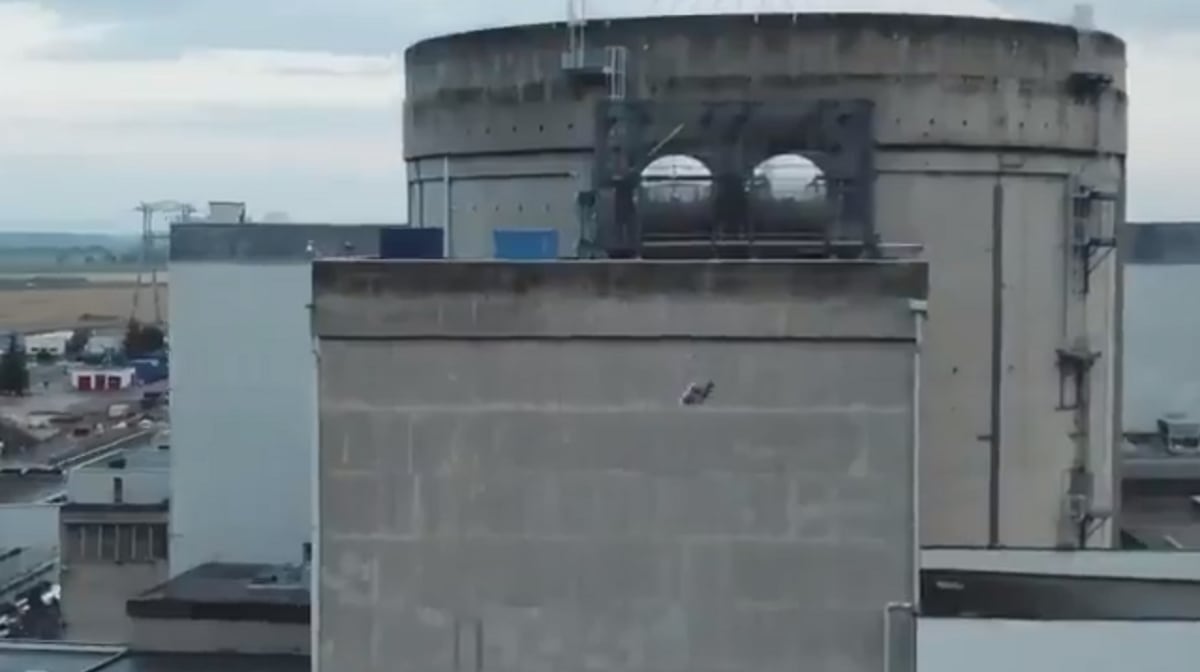MINOT AIR FORCE BASE, N.D. — By 2016, top Pentagon officials, including then-Defense Secretary Ash Carter, had honed in on the threat posed by small, commercially available drones to the sites housing America’s nuclear arsenal.
“I have our bases with our weapons storage facilities [mission], and I will tell you there have been recent examples of extended UAS over some of the areas we don’t particularly like them being around,” Gen. Robin Rand, then the head of Air Force Global Strike Command, said at the time, using an acronym for unmanned aerial system. “I’m not comfortable with that.”
While the problem hasn’t gone away, security officials at Minot Air Force Base in North Dakota believe they at least have a plan in place for dealing with any unmanned intrusion.
The concerns of unmanned systems against nuclear facilities, both civil and military, are clear. The devices make excellent little spies, can be weaponized and are cheap to procure — all attributes that have become obvious to U.S. forces who have encountered them while deployed in Syria or Iraq.
RELATED

But Col. Chad Gallagher, who as head of the 91st Security Forces Group at the base is responsible for protecting roughly 8,500 square miles of territory, said some of the challenges caused by drones can be transformed into benefits.
“If you look at anything going on down range, we’re trying to capitalize on the lessons we’ve learned over the last 19 years and counting,” he told sister publication Defense News during a recent visit to the base. “So we can do perimeter checks; we can use it to spot positions; we can use it to go and look in areas that may be obscured by the terrain and have that go over, versus sending a manned helicopter that can potentially be shot down.”
The helicopter question is an important one for Minot. The base currently operates eight UH-1 Huey helicopters for security, but they are all housed at a central base location. To get out to the furthest missile field could take a security response team 30 minutes. But if the 91st could scatter unmanned systems around the fields, it would let the group get eyes on any potential issue in minutes.
“We’ll send one of the inexpensive drones with live, full-motion video,” he said. “You can’t record what civilians are doing, we’re not doing that. But we’ll use it to help protect the force. Before we send in a human being, we’ll send in these drones. So that’s new stuff that we’re trying to work on.”
The base should receive its first wave of ground-based unmanned systems soon, which could expand the unit’s security capabilities.
“A lot of them are really inexpensive. If you look in your [explosive ordnance disposal] forces, they’re already using unmanned robots to do EOD stuff,” Gallagher said. “We’re just trying to go a lot smaller for stuff that we would do for nuclear security. What can we do to send in eyes, get full-motion video with a multitude of sensors before we send a human being in?”
So far, Gallagher said, there haven’t been any breaches by unmanned systems into Minot’s territory. But he is concerned about he potential for an increase in the use of commercial drone technology in the area for the local oil fields and proliferation of wind farms. As a result, the base is trying to establish norms with local industry to make sure everyone is on the same page.
“If you’re below 400 feet, you do not have to file a flight plan through the [U.S. Federal Aviation Administration]. So because there is no flight plans, there’s no way to necessarily know you’re going to have an overflight [by a drone]," he said. "When I have a helicopter up, I definitely don’t want a drone anywhere in the area, so we’re working out deals where, hey, they’re going to give us a plan for the month and what they are doing for oil, wind and utilities. And then we’ll deconflict that. And if we have a mission, we’ll talk to them and ask if they can move to the left or the right, or maybe we change our mission for the day.”
That’s going to get more important in the next decade as the replacement for the Minuteman III intercontinental ballistic missile — the Ground Based Strategic Deterrent — begins to fill the silos and the old ICBM is transferred.
Previously, forces at Minot were using small systems produced by Chinese firm DJI to patrol the region. However, the Pentagon has raised multiple concerns with DJI products, leading to a stop in their use by the department that forced the 91st to look elsewhere.
But that doesn’t mean the DJI-made technology is collecting dust. Those systems have become fodder for the security forces’ anti-drone training, including using them as targets for counter-drone technology. Gallagher declined to go into detail about what counter-drone capabilities the base has, but he did say he’s “comfortable” with what’s readily available.
Aaron Mehta was deputy editor and senior Pentagon correspondent for Defense News, covering policy, strategy and acquisition at the highest levels of the Defense Department and its international partners.








